The population of sarus cranes in India is unique because they primarily inhabit agricultural wetlands close to humans. The sarus crane (Antigone antigone) is a kind of conservation anomaly. Unlike many wildlife species, these striking birds, with their blood-red heads and statuesque figures, appear to have benefitted from the humanisations of landscapes. “During the Green Revolution, large parts of India were artificially wetted due to the building of canals and the introduction of irrigation,” explains Dr Gopi Sundar, a wildlife biologist with the Nature Conservation Foundation who has been studying the cranes since 1998. “In India, the population of this species has gone up tenfold, even twentyfold.”
Sarus cranes are known as a wetland species, but Dr Sundar is quick to clarify that while they do like water, they do not require wetlands specifically. “Fortunately for us, the sarus actually adjusts to artificial wet areas,” he says. “This is a good thing because natural freshwater wetlands have become the most endangered habitat in the world. If the sarus had been a super-specialist, restricted to undisturbed areas, we would have lost them.”
Today, these gangly birds are found in floodplains and seasonally flooded regions in Uttar Pradesh, Haryana, Madhya Pradesh, eastern Rajasthan, in the rice belts of Anand-Kheda in Gujarat, and the Gondia region in Maharashtra. “They used to be found all the way down south in Karnataka,” says Dr Sundar. “We even have photos of sarus cranes nesting in Mysore and on the outskirts of Bangalore, but those images are decades old, and we don’t understand why they are no longer there.”
About 99 per cent of the population of sarus cranes lies outside protected areas — more specifically, in agricultural fields of rice and other water-loving crops. “In several places in India, the sarus has the highest breeding success of any crane species anywhere in the world,” says Dr Sundar.
The real danger, he says, is not from people that live alongside the sarus. “It is from government schemes, developmental plans, and itinerant profiteers that have no connection with the land,” he says. “This is true of most habitats, whether it’s grasslands, or the ocean, or the Amazon, or the habitats of the sarus crane.”
The people that do have a connection to their habitat do remarkable things. “Even really small-holding farmers will allow the birds to occupy their rice fields. They will not touch or disturb them, and they walk around them, even feed them,” he says. “It’s quite remarkable how much the farmer gives the sarus.”

The sarus crane is the tallest flying bird on the planet, with adults standing upward of five feet in height. They are found in India, Southeast Asia, and Australia and are categorised as “Vulnerable”, according to the IUCN. “As a species, the sarus is about 230 million years old,” says Dr Sundar. There are three living subspecies of the sarus cranes: Indian (Grus antigone antigone), Eastern (G.a. sharpii), and Australian (G.a. gillae).

Mature adults spend much of the year with their mates, preparing nests, breeding, and rearing young. Adolescent birds yet to attain sexual maturity spend their time in congregations, sometimes of several hundred.
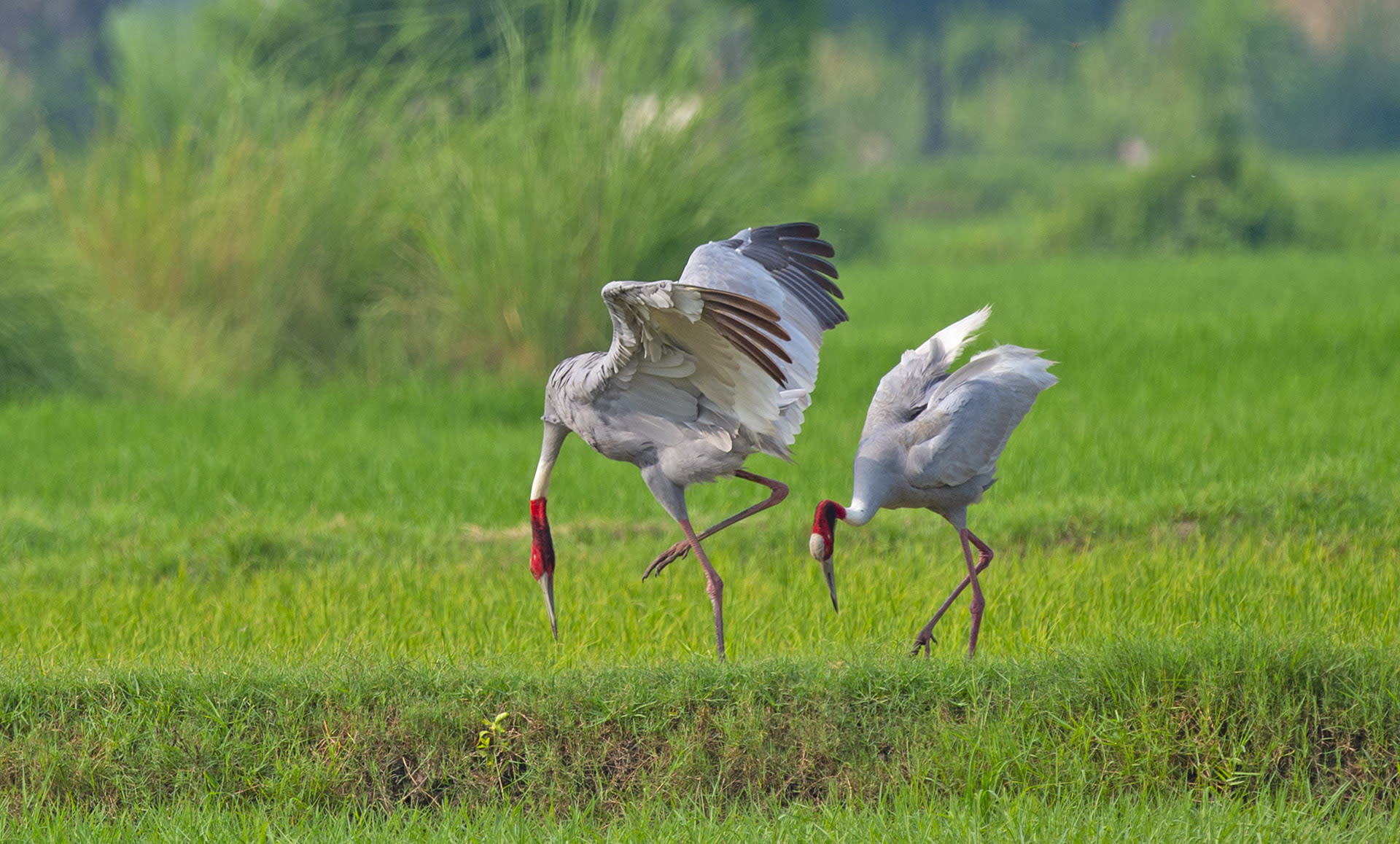
Real estate is serious business amongst sarus cranes, as it determines the quality of food and quality of life for them and their offspring. Only breeding pairs are territorial, but the nature of their territoriality depends on their habitat. “In areas where there are irrigation canals, and there is water throughout the year, breeding pairs defend their territory year-round,” explains Dr Sundar.
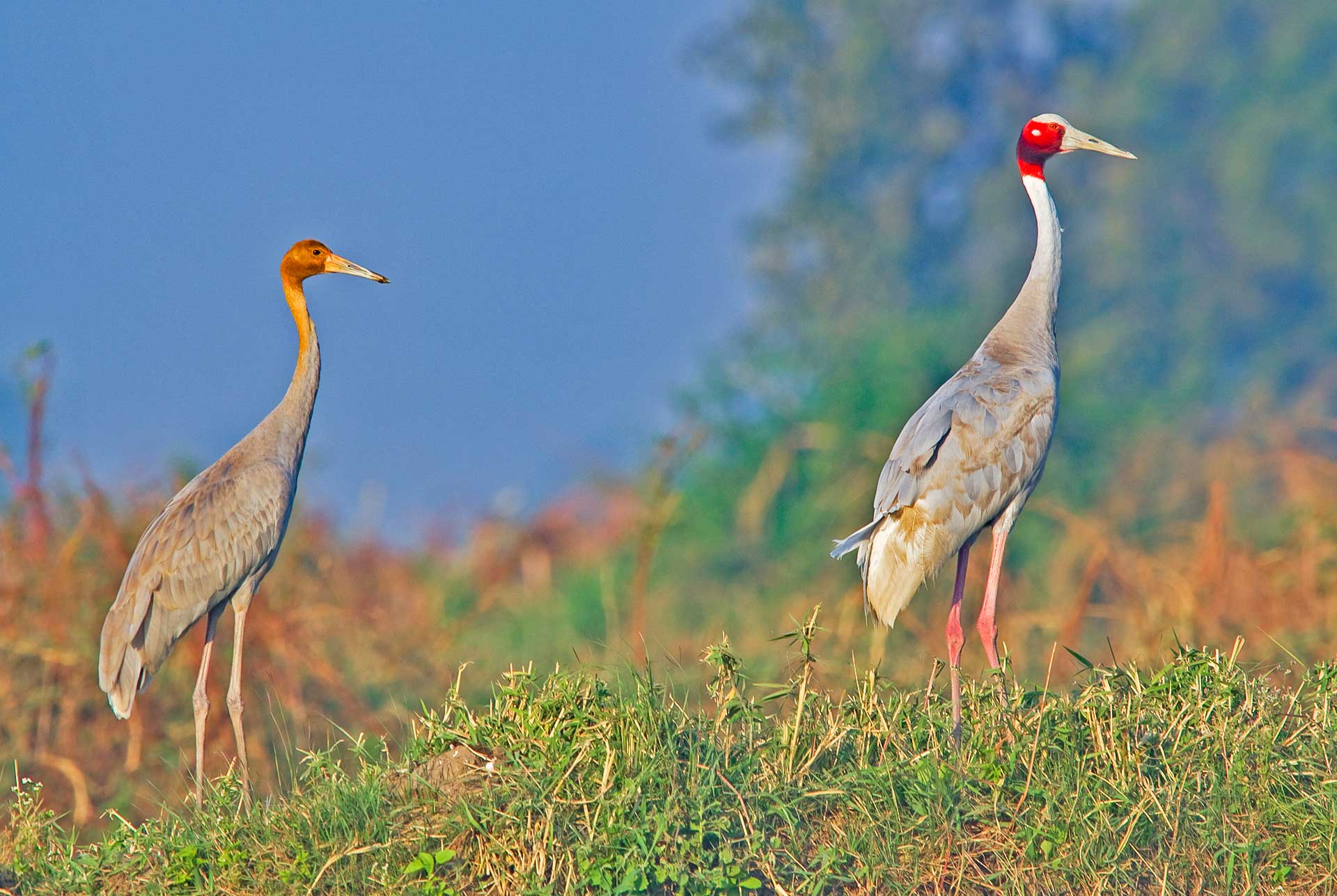
“In other places like Gujarat, Rajasthan, Maharashtra, and Madhya Pradesh where irrigation canals are not a prominent feature of the landscape, breeding pairs defend their territory only during the breeding season, until their young can fly, or until there is water in the landscape,” says Dr Sundar. This photo captures an adult and a young crane aged around six months.
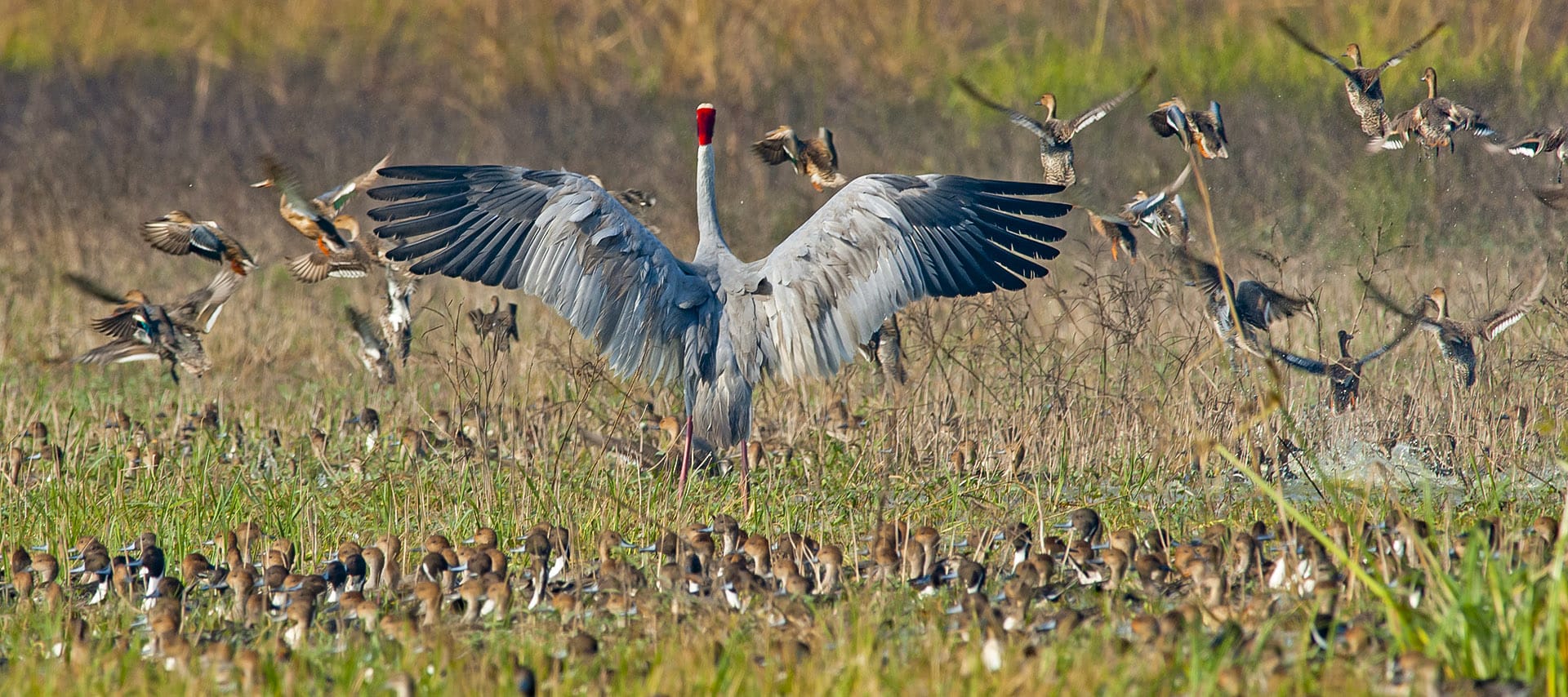
The size of a sarus crane’s territory varies according to the habitat. “In some areas in Uttar Pradesh, it can be as low as half a hectare, which is the smallest territory size of any crane species anywhere in the world,” says Dr Sundar. “Not even in Keoladeo National Park, Bharatpur, is it so small, so some of our farmlands are remarkably healthy systems, whereas, in places like Chittorgarh or Pratapgarh in the Aravallis, the crane’s territory can be several square kilometres because there’s not much to eat.”
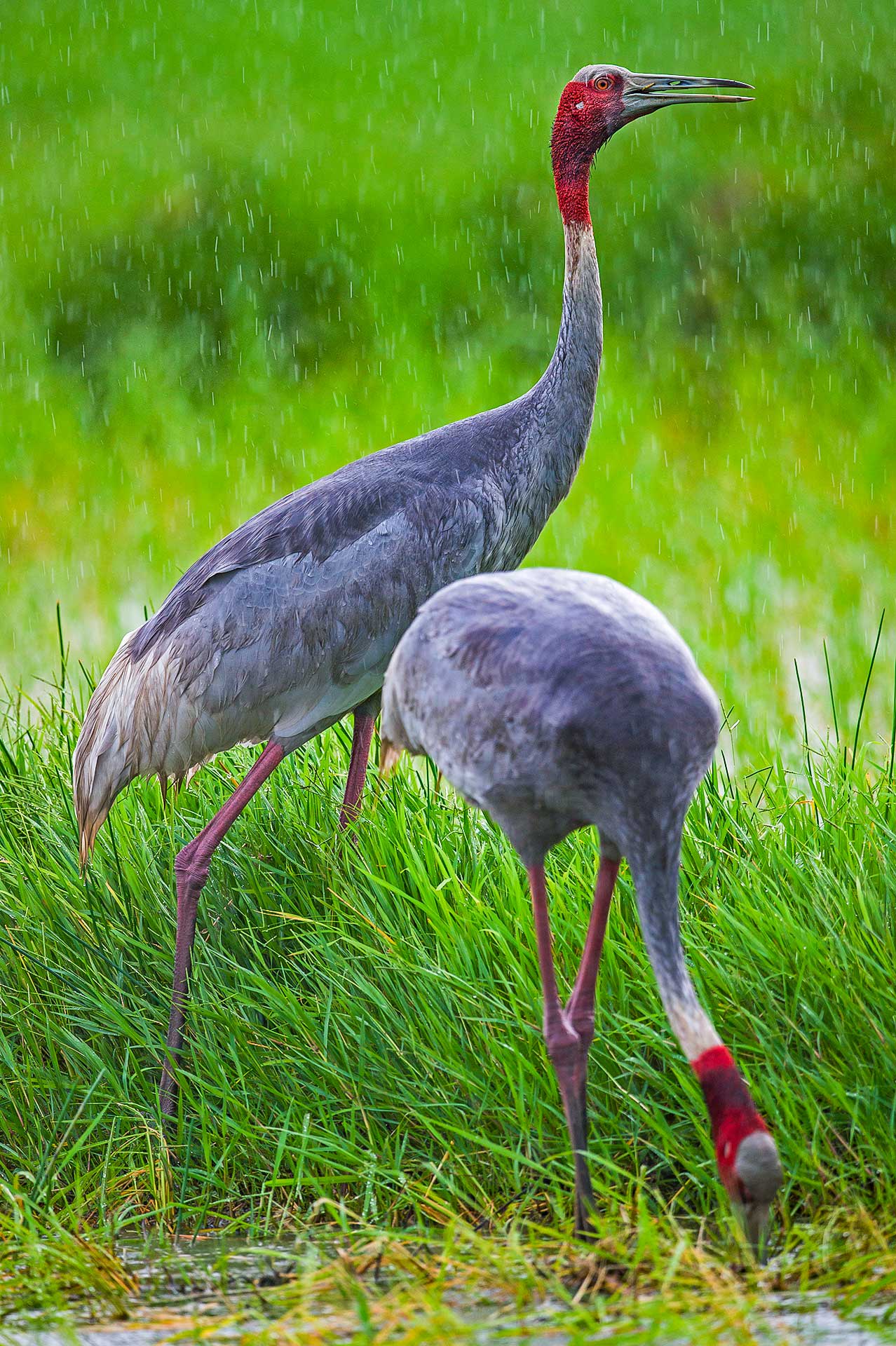

Sarus cranes are opportunistic omnivores that will eat “pretty much anything”, according to Dr Sundar. “In places with small territories, farmers put potatoes, peas, wheat, rice — the sarus eats all of it.” The birds eat lizards, snakes, duck eggs, protein-rich tubers, and even small birds in the wild. “In healthy farmlands, I’ve seen them slurping up earthworms, one after the other, like noodles,” he says. “They also dig up a lot of grass shoots, especially in the summer when there is very little greenery.”

Sarus cranes are intelligent creatures that have learned to adapt to their environment, and Dr Sundar has numerous observations to attest to this. “In UP, farmers pulse their wheat fields with water, wait for them to dry, and then pulse water through again so that it doesn’t stagnate,” explains Dr Sundar. “The cranes station themselves near the burrows of rats, waiting for them to be flushed out by the water. I have observed a male sarus run from the burrow with a rat in its mouth to feed its young chick, then run back to catch the next rat, on and on, until the chick had eaten so much, it could barely move.”
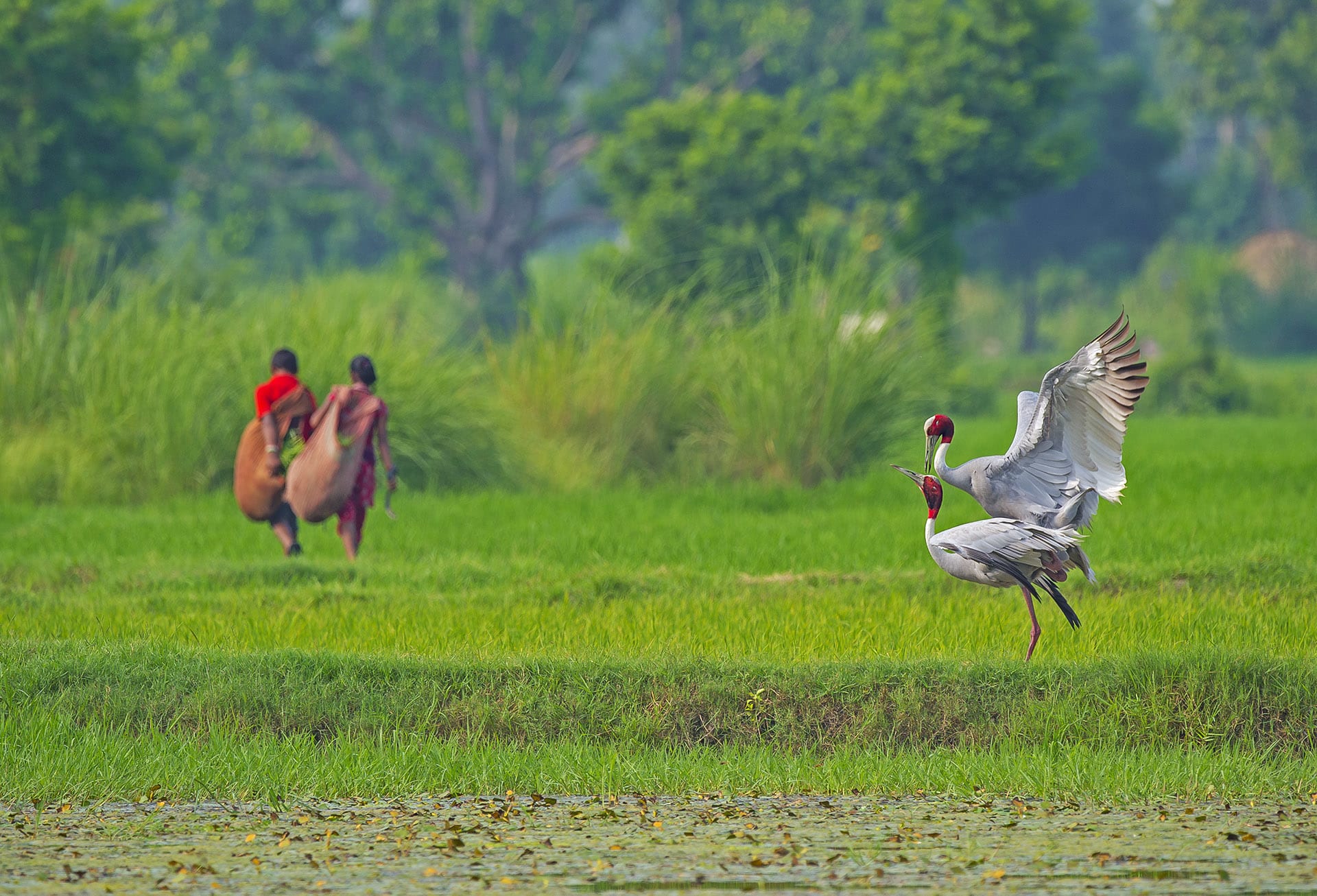
Sarus cranes are famed for their courtship rituals and breeding behaviour. “One such behaviour is duetting, where the male and female sing in coordination to form one unified song,” says the Nature Conservation Foundation website.
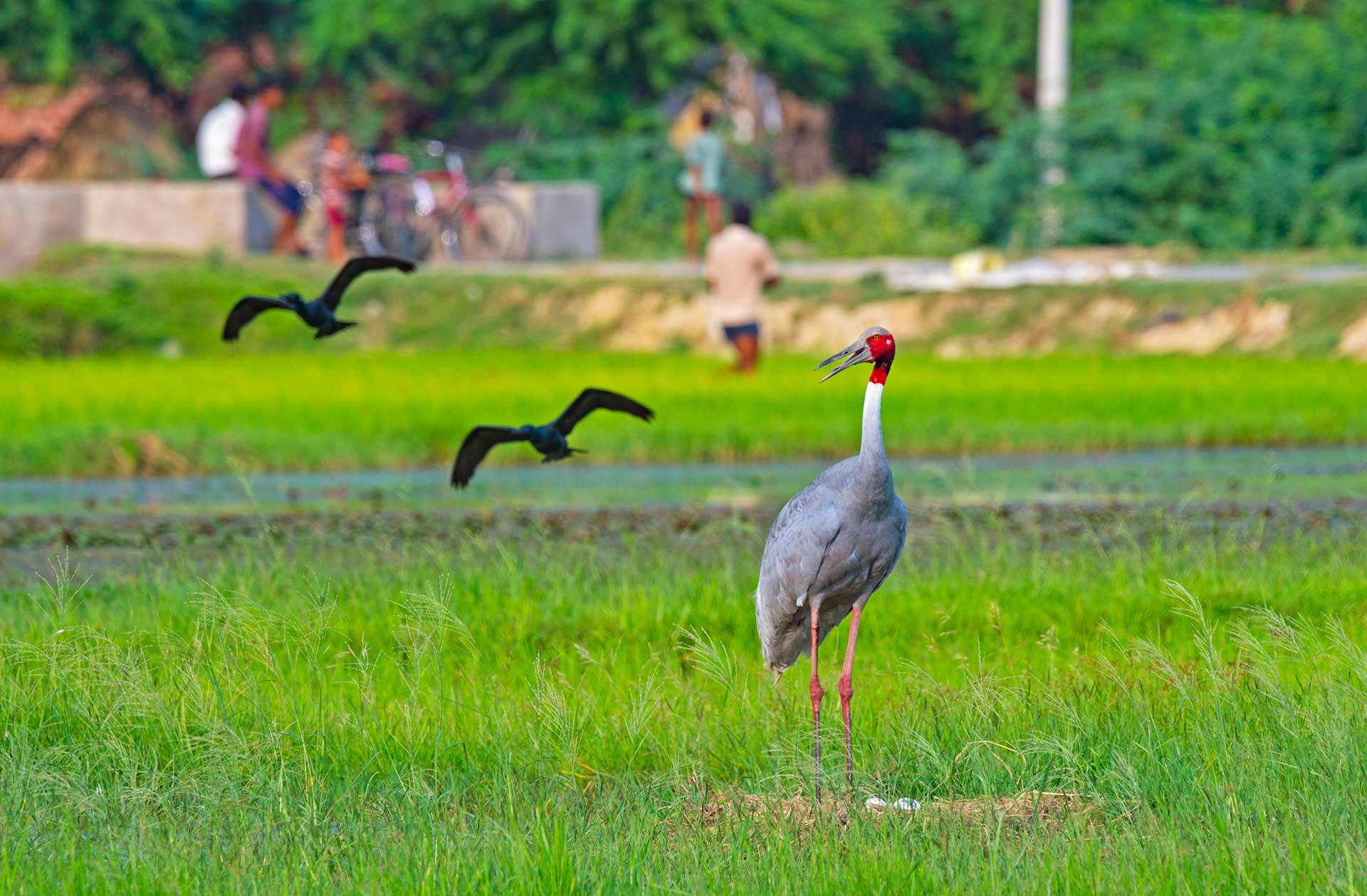
Though sarus cranes usually lay one or two eggs per clutch, Dr Sundar says that occasionally a four-egg clutch is found. “Doubling your brood size when you’re a bird of this size is quite an adventure — something we did not expect, but we are seeing this in agricultural areas,” he says. “We now have documented nine families that have raised four chicks each.”
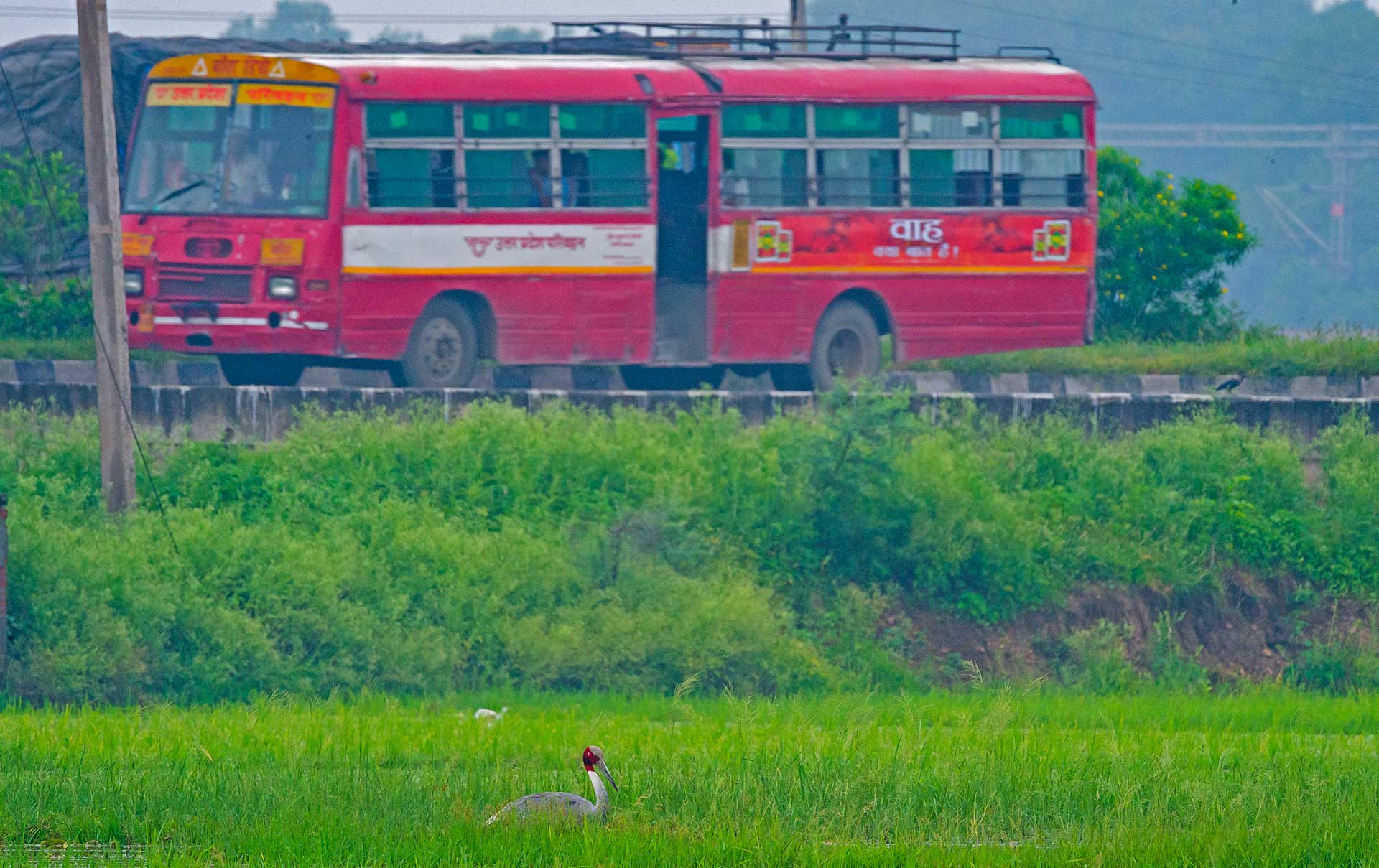
All in all, it appears that the sarus crane does fairly well in areas of human habitation, “so long as certain criteria are met,” says Dr Sundar. “If you go to the rice fields of Vietnam and Cambodia, you won’t see a single sarus because there is a lot of hunting in the area.” In contrast, many Indian farmers ascribe good luck and other cultural values to the sarus, so they let the birds be, despite the economic loss they might suffer. The farmer benefits, too, as the cranes ensure fields are largely rodent-free.
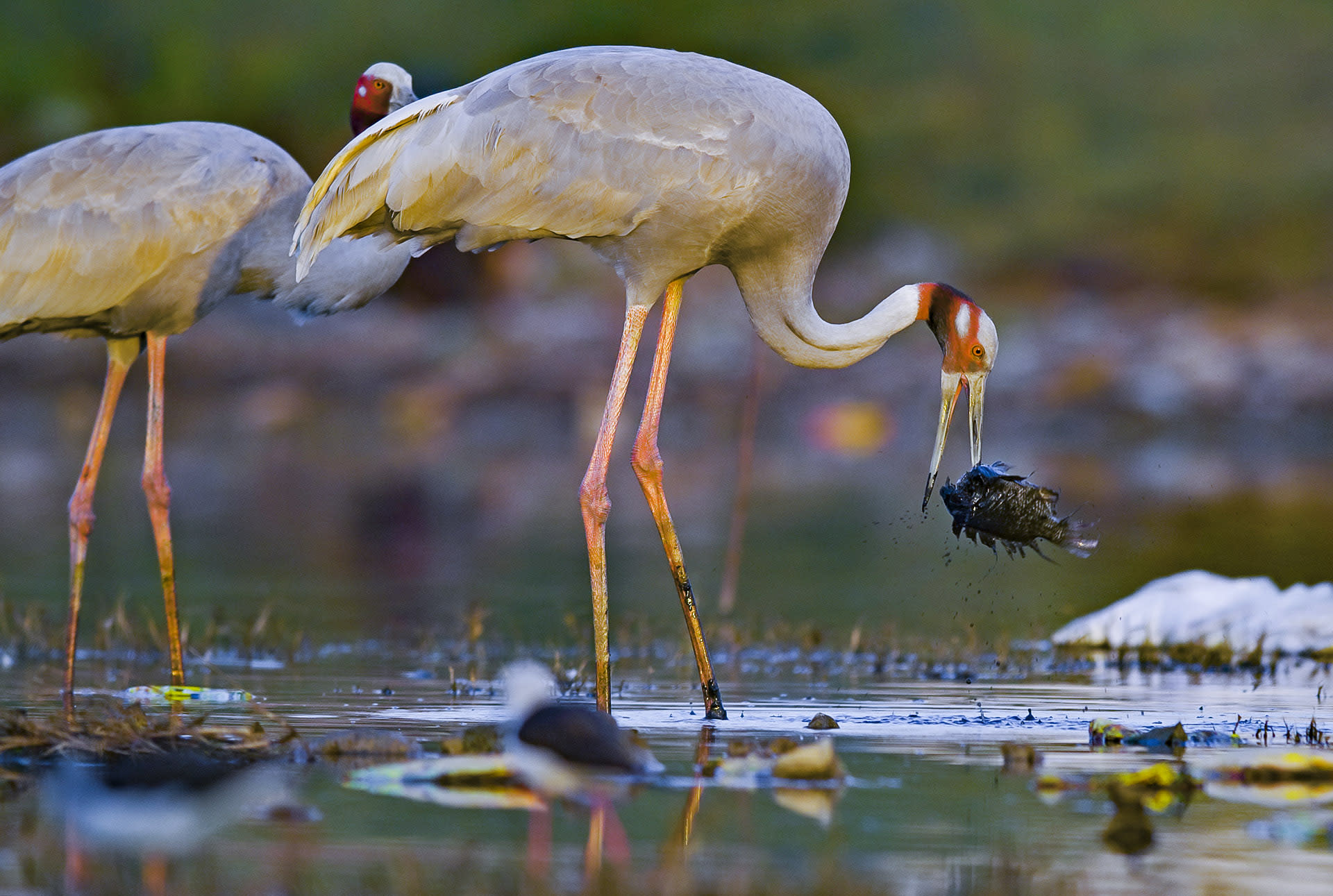
Dr Sundar has been studying the sarus for 23 years but admits that much remains a mystery because the species and its environment are constantly changing. “In captivity, the sarus can live beyond 90 years, so it is impossible for any researcher to observe its entire life cycle,” he says. “The stories of birds that I have banded as chicks will only be told by people who come after me, which is exciting in its own way. We know that we will never know everything about this species.”

